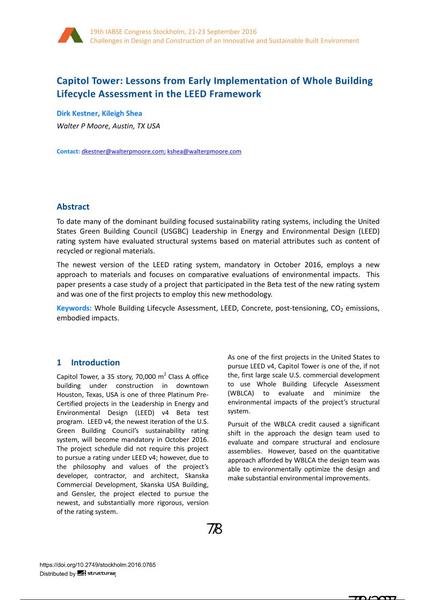Capitol Tower: Lessons from Early Implementation of Whole Building Lifecycle Assessment in the LEED Framework

|
|
|||||||||||
Bibliografische Angaben
| Autor(en): |
Dirk Matthew Kestner
(Walter P Moore, Austin, TX USA)
Kileigh Errin Shea (Walter P Moore, Austin, TX USA) |
||||
|---|---|---|---|---|---|
| Medium: | Tagungsbeitrag | ||||
| Sprache(n): | Englisch | ||||
| Tagung: | IABSE Congress: Challenges in Design and Construction of an Innovative and Sustainable Built Environment, Stockholm, Sweden, 21-23 September 2016 | ||||
| Veröffentlicht in: | IABSE Congress Stockholm, 2016 | ||||
|
|||||
| Seite(n): | 778-785 | ||||
| Anzahl der Seiten (im PDF): | 8 | ||||
| Jahr: | 2016 | ||||
| DOI: | 10.2749/stockholm.2016.0765 | ||||
| Abstrakt: |
To date many of the dominant building focused sustainability rating systems, including the United States Green Building Council (USGBC) Leadership in Energy and Environmental Design (LEED) rating system have evaluated structural systems based on material attributes such as content of recycled or regional materials. The newest version of the LEED rating system, mandatory in October 2016, employs a new approach to materials and focuses on comparative evaluations of environmental impacts. This paper presents a case study of a project that participated in the Beta test of the new rating system and was one of the first projects to employ this new methodology. |
||||
| Stichwörter: |
Beton LEED
|
||||
